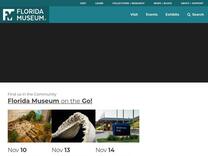Ana Paula dos Santos de Carvalho – Research News https://www.floridamuseum.ufl.edu/science/tag/ana-paula-dos-santos-de-carvalho/
from the Florida Museum of Natural History
Research News Ana Paula dos Santos de Carvalho About 100 million years ago, a

